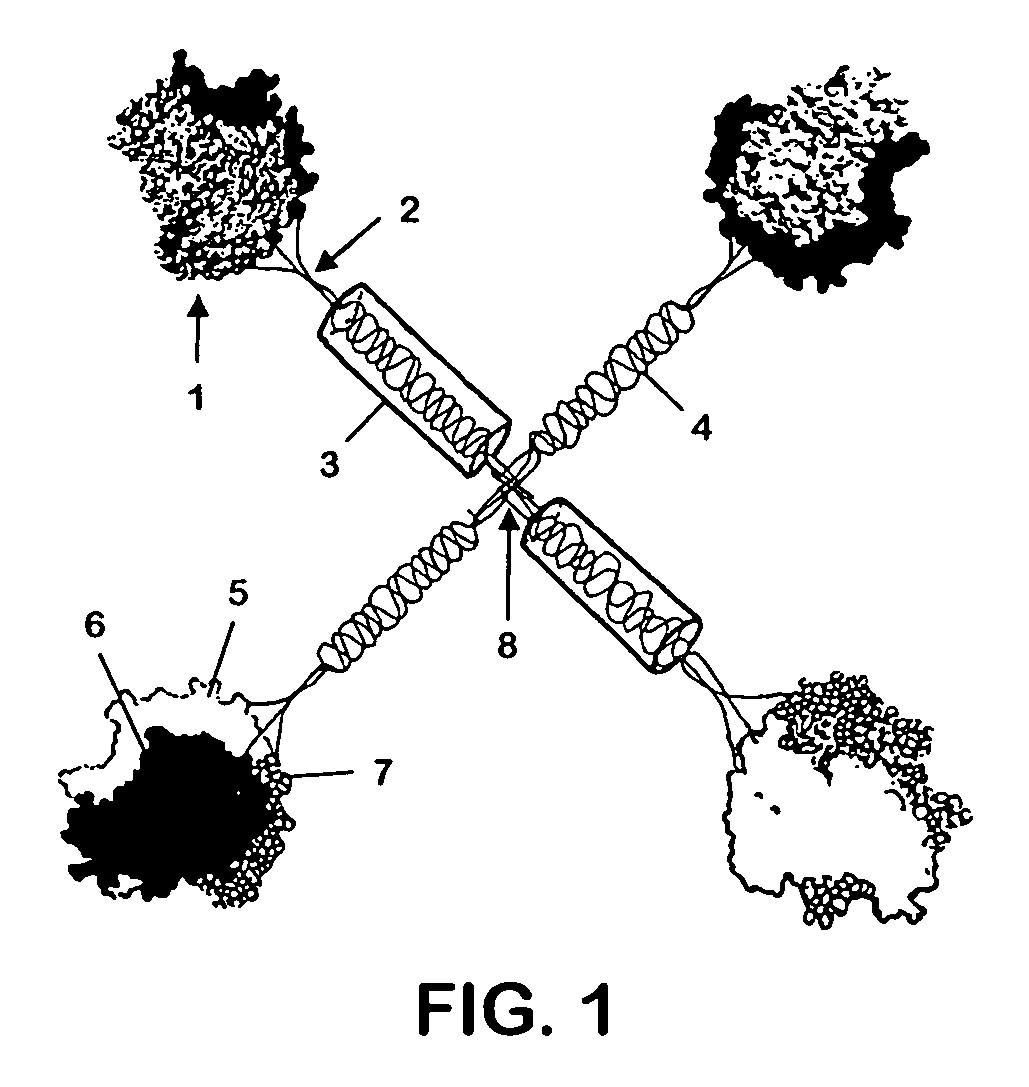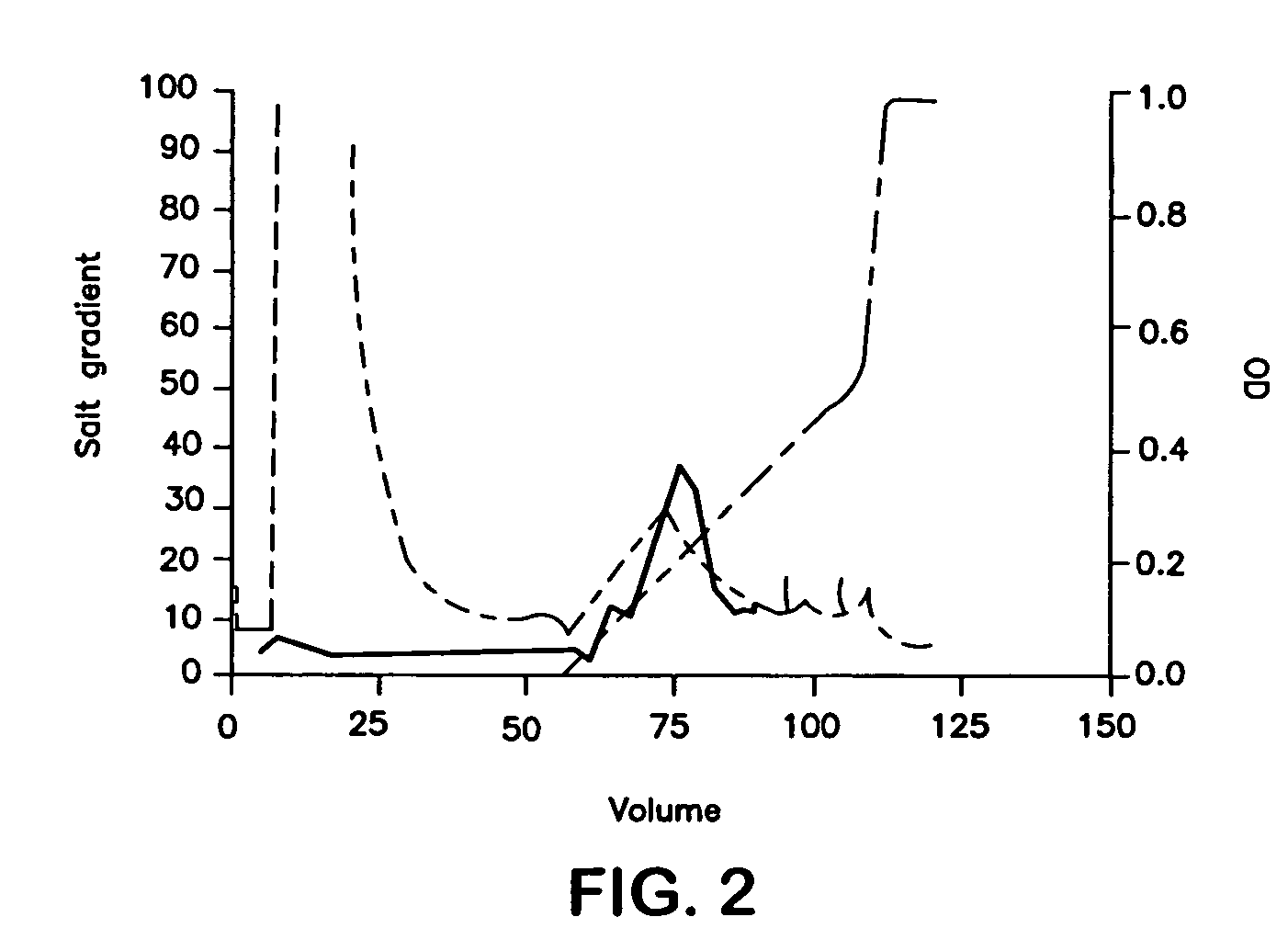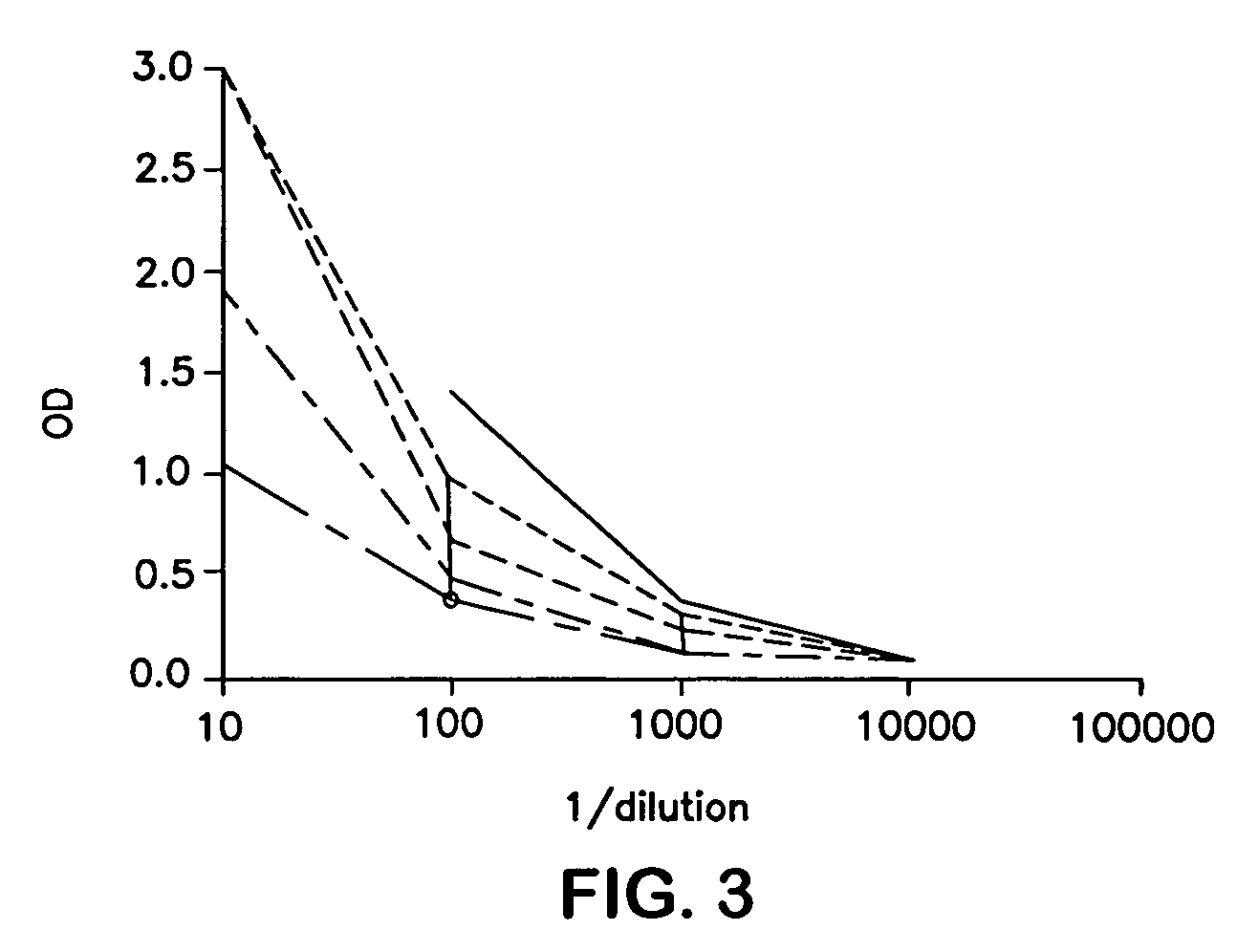Multimeric fusion proteins of the TNF superfamily ligands
a technology of fusion proteins and superfamily ligands, applied in the field of multimeric fusion proteins of the tnf superfamily ligands, can solve the problems of inability to properly fold the amino acid chain, fail to apply the necessary modifications, and it is not always straightforward to express proteins composed of two or more amino acid chains. , to achieve the effect of stimulating the immune response and increasing the antigenicity of cells
- Summary
- Abstract
- Description
- Claims
- Application Information
AI Technical Summary
Benefits of technology
Problems solved by technology
Method used
Image
Examples
example 1
Design Principles in Constructing Collectin-TNFSF Member Fusion Proteins.
[0076]To express CD40L and other TNFSF members as stable, multimeric proteins, the coding region of the extracellular, C-terminal portion of CD40L was joined in-frame to the collectin, surfactant protein D(SPD). The N-terminus of SPD contains two cysteines which form the disulfide bonds necessary for the 4-armed cruciate structure of the overall molecule [Brown-Augsburger, 1996]. C-terminal to these cysteines in SPD is a long triple-helical collagenous “stalk” which ends in the “neck” region that promotes the trimerization of each arm of the structure. Immediately after this neck region, the coding sequence for the extracellular portion of CD40L was added, in place of the carbohydrate recognition domain (CRD) of SPD. The collectins were chosen as the framework for the multimeric construct because of their multi-subunit structure and the trimeric nature of their stalk regions. Appropriateness of replacing the CR...
example 2
Expression of Human and Murine CD40L-SPD in CHO Cells.
[0077]The coding regions for the extracellular portion of human CD40L, human T147N-CD40L, an inactive mutant of CD40L, or murine CD40L were joined to the neck region of murine SPD, replacing the SPD CRD (FIG. 1). A CMV-driven expression plasmid for the construct was co-transfected with a DHFR minigene into DNFR-deficient CHO cells. Following selection in nucleoside-free media, expressing CHO clones were amplified by culture in ascending doses of methotrexate. The resulting clones produced about 1-10 μg / mL of the fusion protein over a 3 day period in media containing FBS.
[0078]Clones were adapted for growth as suspension cells in two types of serum-free media. Murine CHO-SPD produced in UltraCHO (BioWhittaker) was largely retained (about 60% as determined by ELISA) by a 1,000 kDa cutoff ultrafiltration membrane (Pall Corp., Port Washington, N.Y.), consistent with a large multimeric complex formed by the stacking of the SPD portion...
example 3
Purification of human and murine CD40L-SPD.
[0079]Purification procedures were developed for murine CD40L-SPD, but the same methods could be applied to human CD40L-SPD with minor modifications. Murine CD40L-SPD has a predicted m.w. of 49 kDa per chain, or about 600 kDa per 12-chain, cruciate molecule, the amino acid sequence predicts a pI of 9.10. Accordingly, conditioned media was concentrated by ultrafiltration through a 100 kDa cutoff filter, which also fractionates the sample on a size basis. After diafiltration into 50 mM bicine, pH 9.00 (also containing 1 mM EDTA added to inhibit metalloproteinases), the sample was applied to a variety of cationic exchange resins. Using Source 30S (Amersham-Pharmacia), most of the ELISA-detectable protein did not bind and was recovered in the flow-through. However, as reported by Morris et al. {Morris}, Fractogel SO3 650M retained the protein. The retention by this tentacular resin and not by Source 30S suggests binding to positively charged re...
PUM
| Property | Measurement | Unit |
|---|---|---|
| pH | aaaaa | aaaaa |
| pH | aaaaa | aaaaa |
| pH | aaaaa | aaaaa |
Abstract
Description
Claims
Application Information
 Login to View More
Login to View More - R&D
- Intellectual Property
- Life Sciences
- Materials
- Tech Scout
- Unparalleled Data Quality
- Higher Quality Content
- 60% Fewer Hallucinations
Browse by: Latest US Patents, China's latest patents, Technical Efficacy Thesaurus, Application Domain, Technology Topic, Popular Technical Reports.
© 2025 PatSnap. All rights reserved.Legal|Privacy policy|Modern Slavery Act Transparency Statement|Sitemap|About US| Contact US: help@patsnap.com



